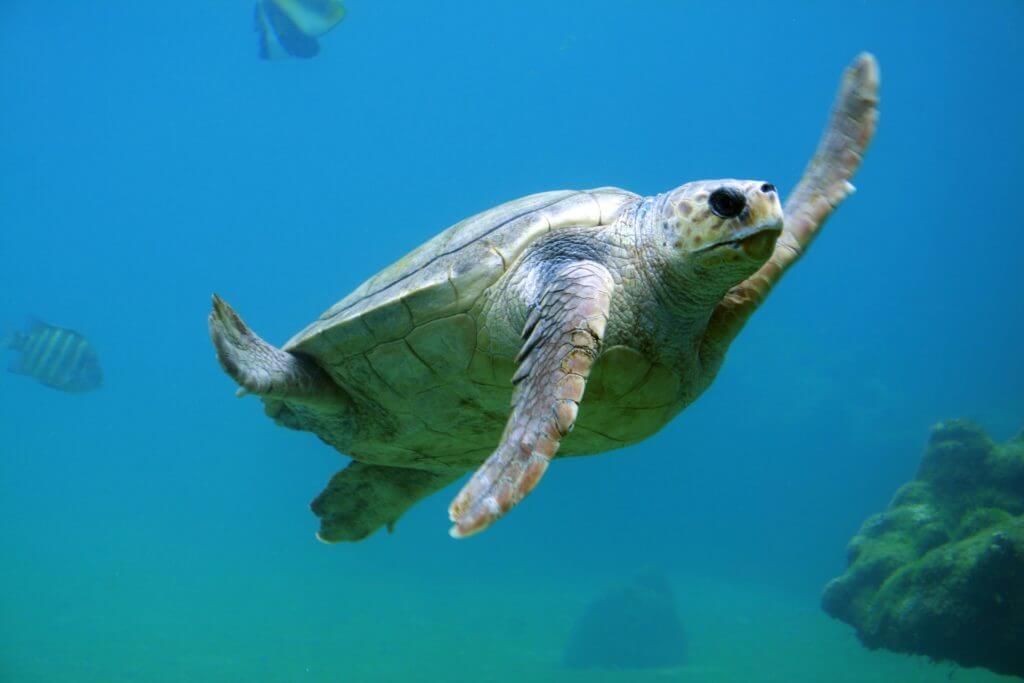Best things to do during your stay in Mayan Riviera
1. Sian Ka’an Biosphere Reserve

The Yucatán contains an abundance of eco-parks and natural reserves, but few compare to the breadth and natural wonder of Sian Ka’an. Just south of Tulum, the reserve contains more than 1.2 million acres of estuaries, reefs, cenotes and wetlands. Within the park, you can take tours of the local wildlife, take part in a diving or snorkeling tour or simply just walk around the beautiful and expansive park.
Recent visitors remarked that the park is well worth the visit, especially considering its small price tag (about 50 pesos per person, or around $2.60). Many stayed the entire day, but some even took two days to explore the expansive area. Several visitors recommend taking a boat ride into the wetlands of the reserve. You can rent a charter in the park, or you hire a kayak guide for a more active pursuit.
Sian Ka’an is accessible by both bus and taxi from Tulum. For more information on available tours, check out the Visit Sian Ka’an website.
2. Playa Paraiso

Just north of the Tulum ruins, the wide Playa Paraíso makes a relaxing end to a day exploring the area ruins. With the recent arrival of the Nuddy Beach Club, the beach has grown extremely popular with Playa del Carmen and Cancún daytrippers, as well as Tulum vacationers. But what it doesn’t boast in seclusion it makes up for in activity – you’ll find plenty of opportunities for snorkeling and scuba diving, plus a few hammocks, lounge chairs and umbrellas to choose from (if you get to the ruins early, you’ll arrive at the beach in time to secure one), and a few beach bars should you want refreshment.
Paradise doesn’t come free; there’s a moderate charge for the water sports, the hammocks and chairs, and of course, for any food. Recent visitors noted that to save a little money, you should pack your own towel and a snack. For about 200 pesos (about $11), you’ll get a couple chairs, an umbrella and parking.
3. El Gran Cenote

Considered sacred waters by the Mayans, the expansive El Gran Cenote is an underground cavern that is ideal for swimming and diving. Here you can swim, snorkel and dive amid some pretty cool geological features, including stalagmites and stalactites.
Located just 20 miles outside of Tulum, this cenote can get particularly crowded, so arrive early for the best atmosphere. To get there, drive or take a taxi toward Cobá until you see the Gran Cenote sign on your right.
Recent visitors highly recommend snorkeling while you’re here, and others point out that bringing your own snorkeling gear will help keep the price down. Several visitors also appreciated that there are lockers available to store your valuables while you explore.
The cenote is open daily from 10 a.m. to 5 p.m. for a moderate fee (about 100 pesos, or $10); guided tours and dives cost extra. For more information, visit the website.
4. Tulum Ruins

The source of Tulum’s popularity (and probably the reason you’ll visit the area) are the Tulum ruins, one of the most popular Mayan archaeological sites along the Riviera Maya. Sitting on a patch of rocky coastline just south of Tulum’s downtown, the ruins showcase several templos (temples) and castillos (castles) from the once-thriving pre-Colombian Mayans.
If you’ve already been to Chichen Itza, Tulum might prove a bit lackluster, as recent visitors said the ruins do not compare. The area isn’t necessarily large nor is the architecture the most grandiose. But the scenery is dramatic; the ruins sit over the sea atop a small cliff, offering visitors beautiful views of the surrounding landscape.
Travelers recommend you bring a sun hat and sneakers, since you’ll likely be walking around under the sun for most of the day. Don’t forget your swimsuit either because the calm beautiful beach just below the ruins provides an excellent and dramatic swimming opportunity.
The park is open daily from 8 a.m. to 5 p.m. and there is a small entrance fee of about 95 pesos (or $5). A paid permit is also required to take video.
5. Maya Spa

Catering to the yoga tourist, this spa in the Azulik hotel offers massages, body wraps, crystal therapy treatments and yoga classes. But you could do all those things at home: Recent visitors say the true highlight of Maya Spa are the nighttime temazcal sessions, or steam baths that indigenous Mexicans believed had healing and purifying powers.
The Maya Spa Wellness Center is open daily and its treatments are available for both hotel guests and those staying elsewhere. Call ahead to make an appointment, and visit the spa’s official website for a full listing of prices and treatments.
6. Punta Laguna Nature Reserve

Less than 40 miles from Tulum, Punta Laguna Nature Reserve offers one of the most unique sightseeing attractions in all of the Yucatán: spider monkeys. The creatures are a top draw for the reserve, which also showcases jaguars, pumas, howler monkeys and dozens of bird species.
The nearby Mayan village also allows travelers a glimpse of indigenous Mexican lifestyle, where you can tour thatched roof houses and watch people cook over open fires.
Most travelers hire a guide to tour the reserve, as guides are usually inexpensive and can provide a more authentic and informed experience for travelers new to the Yucatán. That said, several recent travelers said you can still have a great experience just wandering around on your own.
Punta Laguna lies just about 13 miles northeast of Cobá. From Tulum, you can take a bus, hire a taxi or drive. Open daily, you can tour the park for a moderate fee.
7. Cobá Ruins

If you’re on a Mayan ruins kick, you should also check out the small site at Cobá, about 30 miles north of Tulum. Cobá doesn’t feature the restored, pristine sites of Tulum, nor does it sit atop an awe-inspiring coastal setting, but it still offers history buffs a glimpse of some authentic Mayan ruins. In fact, some argue these ruins are more authentic than those in Tulum because Cobá’s have never been extensively refurbished or restored, simply cleared away for the enjoyment of the public.
The top attraction is the Grand Pyramid, with a top accessible via a daunting climb up more than 120 steps – don’t forget your walking shoes. Once on top, you’re privy to an excellent and unrivaled view of the surrounding jungle. Recent visitors particularly recommended this site because of its lack of tourist-heavy crowds.
You can access the site by following signs toward Cobá from downtown Tulum, which is about 30 miles away. The ruins are open daily for a small fee.
8. Muyil Archaeological Site

Located on the western edge of the Sian Ka’an Biosphere Reserve (just off Highway 307), the Muyil archaeological site has six main structures, so you might want to visit here instead of the super popular, but slightly overrated, Tulum Ruins (which are near the downtown area). Three of the most prominent include El Castillo (an impressive 51-foot pyramid and one of the tallest buildings in the Yucatán); the stucco-decorated Pink Palace; and the Sacbé, or the ancient paved roads and serpentine paths through some of the most intense, yet beautiful wilderness on the reserve. Climbing the structures is prohibited, but pictures are allowed.
It costs 50 pesos (about $2.60 USD) to enter Muyil and explore it on foot, but recent visitors recommend spending a bit more for a canal tour of the Sian Ka’an lagoon and a pleasant view of the site from the water. The canal tour also ensures you’ll find some of Muyil’s harder to reach structures.
9. Voladores

Just outside the entrance to the Tulum ruins, you can oftentimes catch a group of five costumed men performing flying and dancing stunts atop a tall pole. The performance and the men are loosely known as “Voladores,” and they’re recreating a prehistoric ritual most often associated with the Totonac Indians of central Mexico. According to some travelers, that’s all you need to know. The show is technically free, but do not stop to watch the performance or take photos unless you’re prepared to be solicited for a “donation.” In layman’s terms, it’s a tourist trap.
On the other hand, the Voladores routine is an extremely acrobatic and unique spectacle, meaning it is probably worth a few U.S. dollars. The performances do not happen on a structured schedule, but you can expect to spot one around the peak times to visit the ruins.



